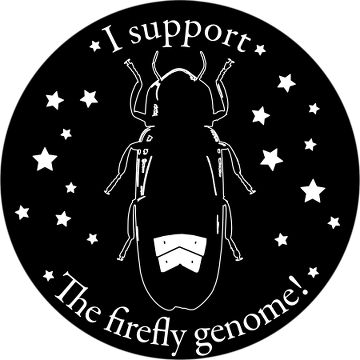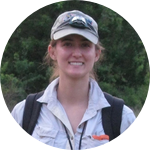Project Results
Firefly genomes illuminate parallel origins of bioluminescence in beetles
Timothy R Fallon, Sarah E Lower, Ching-Ho Chang, Manabu Bessho-Uehara, Gavin J Martin, Adam J Bewick, Megan Behringer, Humberto J Debat, Isaac Wong, John C Day, Anton Suvorov, Christian J Silva, Kathrin F Stanger-Hall, David W Hall, Robert J Schmitz, David R Nelson, Sara M Lewis, Shuji Shigenobu, Seth M Bybee, Amanda M Larracuente, Yuichi Oba, Jing-Ke Weng
About This Project
Fireflies! These silent fireworks on warm summer nights fill us with wonder. But so much about these fascinating critters remains shrouded in mystery. Our team of biologists has joined forces to sequence the genome of the Big Dipper Firefly, Photinus pyralis. This project has the potential to foster important advances in bioscience and medicine, will illuminate how a complex trait like light production evolves, and will help guide future efforts to conserve disappearing firefly populations.
Ask the Scientists
Join The DiscussionWhat is the context of this research?
Fireflies’ ability to produce light, their bioluminescence, is considered their signature trait. Many fireflies use their light-producing ability for courtship communication (check out Sara Lewis’ 2014 TED talk). Since its discovery in the 1980s, the firefly luciferase gene responsible for the light-giving reaction has become widely used in agricultural and biomedical research. Although you might expect that all this flashing would make fireflies especially vulnerable to predators, fireflies have also evolved sophisticated strategies that makes their light a warning rather than a weakness. Their defense arsenal includes poisonous chemicals and bright warning coloration. But we're still in the dark because, for the most part, the genes that make all this possible remain a mystery.
What is the significance of this project?
Sequencing the firefly genome will likely yield new insights into the physiology and evolution of bioluminescence, and a detailed picture for how a complex trait like bioluminescence evolves. It will advance our understanding of how fireflies evolved their many other unique traits, such as chemical defense and the genetic basis for how these lightningbugs can so precisely control and interpret the flashes of light that are critical to their reproductive success. Lastly, firefly populations around the world are blinking out. We do know many places where fireflies are at risk from habitat loss, pesticides, and light pollution, and this project could help scientists to decipher the root causes of fireflies’ decline elsewhere. The more we know, the better equipped we’ll be to protect them.
What are the goals of the project?
Our project will sequence the genome of the Big Dipper Firefly Photinus pyralis, a quintessentially American firefly and key player in the history of bioluminescence research, using PacBio’s single-molecule real-time (SMRT) DNA sequencing technology. After sequencing and assembling the Photinus pyralis genome, our team will thoroughly annotate the information in the genome by combining well-curated bioinformatic tools with our substantial knowledge of firefly biology. Our final goal will be to make all the information we discover, including the genomic assembly, annotation, and scientific manuscripts produced by the team, available online in an easily accessible format so that professional scientists, citizen scientists, and anyone who’s just plain curious can explore and learn.
Budget
PacBio is a DNA sequencing company whose innovative long reads represent the ideal technology to sequence the firefly genome. Each “read” gives us data on the DNA sequence of a large genome fragment: tens of thousands of DNA bases (A, T, C, and G) long! Getting these long-reads from across the firefly genome will enable us to assemble a platinum quality firefly genome, including the tricky regions that don't assemble using cheaper short-read sequencing.
10 SMRT cells on PacBio's Sequel platform should give us ~80X coverage of genomic data; enough to dramatically improve our existing short-read genome. Though Team Firefly placed second in PacBio's free genome contest, continued support from PacBio means your tax-deductible donation can go further than ever to support science!
If our campaign is successful, the freely available firefly genome will serve as a rock-solid foundation for deep study of firefly biology, conservation, and evolution. We hope you consider supporting. Even $5 helps!
Endorsed by
Meet the Team
Affiliates
Affiliates
Team Bio
In order to sequence and analyze the firefly genome, we’ve assembled an outstanding research team from several top universities across the U.S. Our team is made up of researchers with expertise in firefly evolution and behavior, biochemistry and evolution of bioluminescence, phylogenetics, genome evolution, and bioinformatics. Most importantly, we all have a strong love for fireflies.
(Collaborator names are listed alphabetically by last name.)
Jing-Ke Weng
Jing-Ke spent much of his childhood time catching insects, collecting rock and plant specimens, and later building electronic devices. To him, becoming a scientist studying those amazing phenomena of nature is a dream come true.
Check out more fun research projects happening in his lab at the Whitehead Institute/MIT at: http://wenglab.wi.mit.edu/
Megan Behringer
Megan is a Postdoctoral Researcher at Indiana University with Mike Lynch and Jay Lennon. She considers herself a genome detective: looking for small changes in DNA, which cause large changes in how organisms behave and interact. Her favorite food is popcorn and she basically views it as a food group at this point.
Seth Bybee
Seth is an assistant professor at Brigham Young University. He is intrigued by the evolution of color visual systems and color signals and how the diversity of life on earth is connected. He is the most biological fit biologist you will ever meet...he has seven kids.
Tim Fallon, PhD
Tim is currently a postdoctoral scholar in the laboratory of Brad Moore at the Scripps Institution of Oceanography & UC San Diego. Formerly Tim was a PhD student at MIT in the laboratory of Dr. Jing-Ke Weng. Working at the intersection of biochemistry, genomics, and evolution, he thinks bioluminescence is the best thing since sliced bread. He is a big reader. His favorite book is currently Nick Lane's "The Vital Question"
Amanda Larracuente
Amanda is an evolutionary biologist interested in genome evolution. When she’s not wrangling insect genomes, she’s playing outside with her two rambunctious sons who enjoy watching fireflies as much as she does.
Sara Lewis
Sara is an evolutionary ecologist at Tufts, and is convinced that even scientists can hold fast to wonder. To celebrate the science and the wonder of fireflies, she recently wrote a book called Silent Sparks: The Wondrous World of Fireflies (2016).
Gavin Martin
Gavin is a PhD student working at BYU with Dr. Seth Bybee. He has always been captivated by the vast diversity found within beetles. He currently enjoys sharing the joy of firefly bioluminescence with his three children.
Sarah Sander
Originally from California, where there are no flashing fireflies, Sarah vividly remembers the first time she saw the displays of these enchanting insects during her PhD work at the University of Georgia. An evolutionary biologist, she is fascinated by firefly biology and genomes. Recently, you may have heard her on NPR's Science Friday discussing the evolution of firefly flash color. She enjoys hunting for fireflies while hiking with her new puppy, Bjorn.
Additional Information
Thank you for visiting our project! Want to show off your support of the firefly genome? We have some special treats for backers:
$1 – Access to our detailed lab notes on the science of the firefly genome
$25 – High-quality digital desktop background of the firefly genome project logo
$50 – A limited edition glow in the dark firefly genome sticker!

$100 – Two glow in the dark stickers!
$110 – A Firefly Communicator (https://www.kickstarter.com/projects/speakfirefly/...), and two limited edition glow in the dark firefly genome stickers!
$200 – Above & 3 stickers
$250 – USB flash drive containing the finalized firefly genome with resources to explain how to explore the data & 3 stickers & firefly communicator
$500 – Above & 5 stickers
$1000 – Signed author's copy of the just released popular science firefly book “Silent Sparks”, written by firefly genome team member Dr. Sara Lewis! (1/3 available)
Project Backers
- 90Backers
- 100%Funded
- $10,008Total Donations
- $111.20Average Donation










